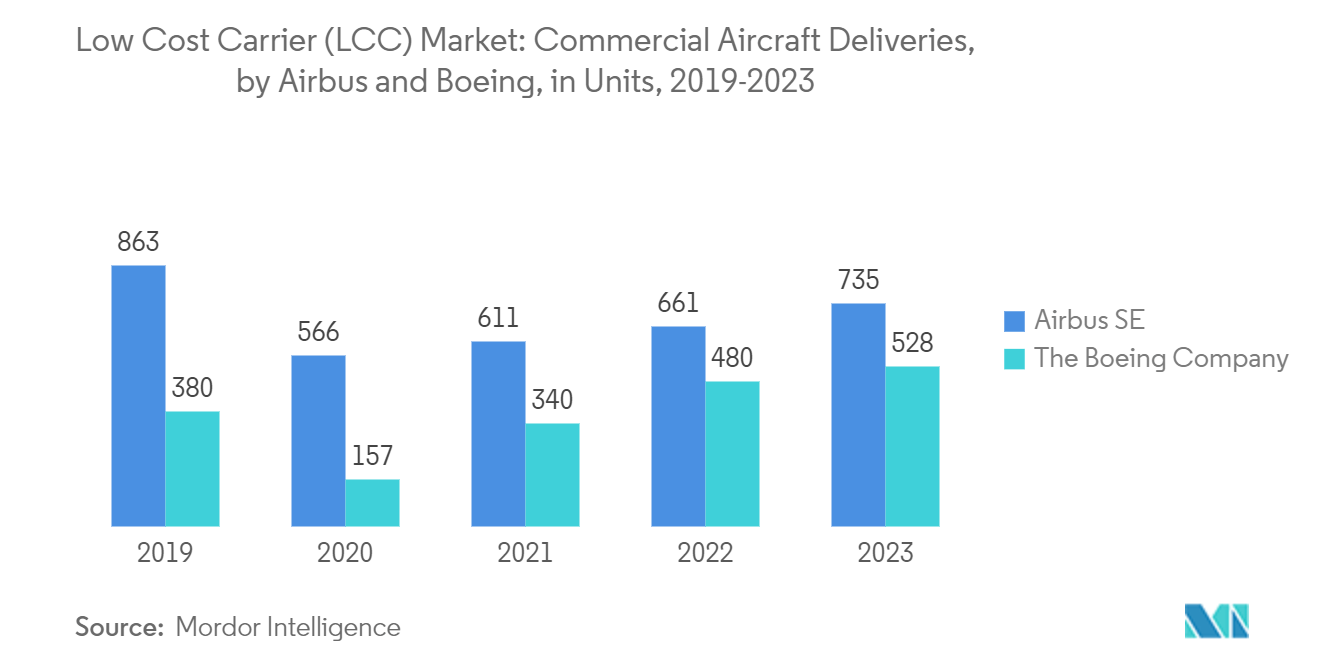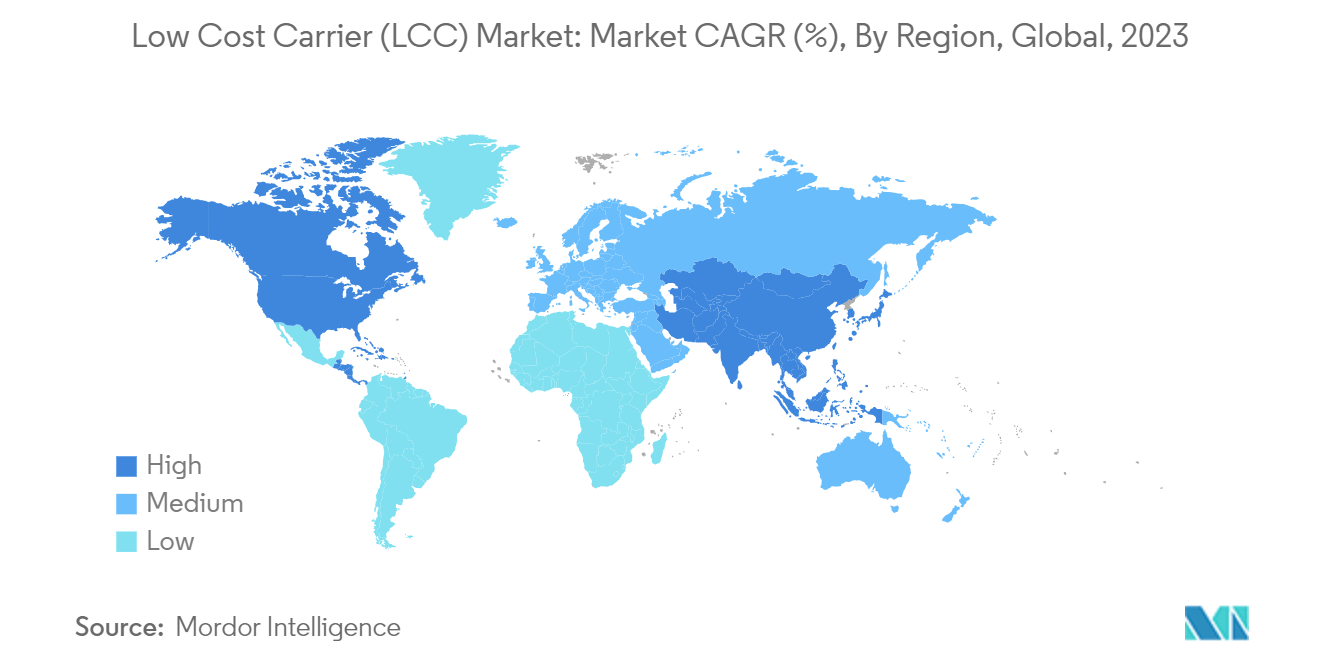Market Trends of Low-Cost Carrier (LCC) Industry
The Narrowbody Aircraft Type is Expected to Witness Significant Growth During the Forecast Period
Narrowbody aircraft, favored by low-cost carriers globally, boasts advanced capabilities, low operating costs, and exceptional fuel efficiency, particularly on short-haul routes. The Airbus A321, renowned for its efficiency, is set to maintain its market dominance. This is bolstered by notable cost reductions of 10% in its classic models and 20% in the Neo variants. Given the success of the low-cost carrier business model and the inherent advantages of newer-generation narrowbody aircraft, there is a surging demand for these advanced models. Advancements in technology are extending the range of these aircraft, allowing them to cover longer distances. Among the popular choices are the Boeing B737 and the Airbus A320.
In February 2023, Air India inked a substantial deal with Airbus, which included orders for 140 A321neo and 70 A320neo aircraft. Additionally, the order included 40 widebody A350s, with a mix of six A350-900s and 34 A350-1000s. Complementing this, Air India's order with Boeing comprised 190 Boeing 737MAX narrowbody planes, 20 Boeing 787 Dreamliners, and 10 Boeing 777X aircraft. These strategic moves underscore the future growth trajectory of the narrowbody aircraft segment.

The Asia-Pacific Region is Expected to Witness Significant Growth During the Forecast Period
The Asia-Pacific region is anticipated to witness substantial growth during the forecast period owing to significant shifts in the air travel market over the past few decades. Governmental changes, policy modifications, economic growth, and rising incomes have collectively fueled the region's air travel expansion. Notably, the rise of low-cost carriers has been pivotal, democratizing air travel by offering more affordable fares, thus broadening their customer base.
Rising air passenger traffic, expanding aviation operations, and adopting newer, more advanced aircraft underscores the trajectory of low-cost carriers in the region. Bolstered by the ASEAN Open Sky agreements, low-cost carriers in Asia-Pacific have seen remarkable growth. With a sizable population boasting sufficient disposable income for air travel, well-managed low-cost airlines are poised for significant success. Projections from Aviation Business News suggest that the Asia-Pacific region will command around 40% of future airliner production.
In May 2023, Malaysia's MYAirline inked an auxiliary power supply (APU) maintenance deal with Honeywell for its fleet of 22 Airbus A320s. By leveraging annual maintenance cost forecasts and predictive trend tracking, Honeywell aims to help MYAirline curb flight delays and cancellations. MYAirline's strides were recognized industry-wide, securing top votes from industry players, consumers, media, and travel professionals. Such collaborations and advancements are set to propel the Asia-Pacific LCC market’s growth in the coming years.


